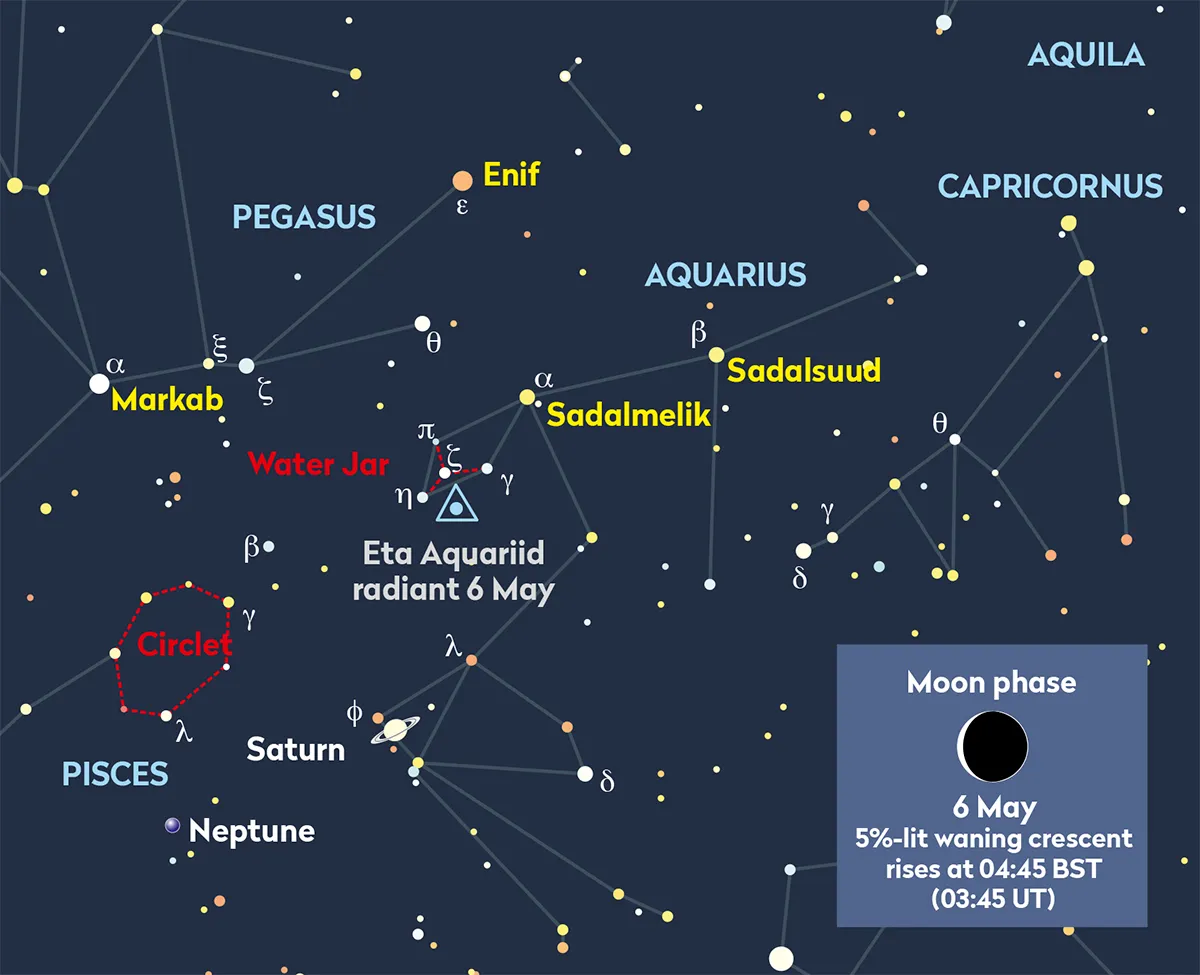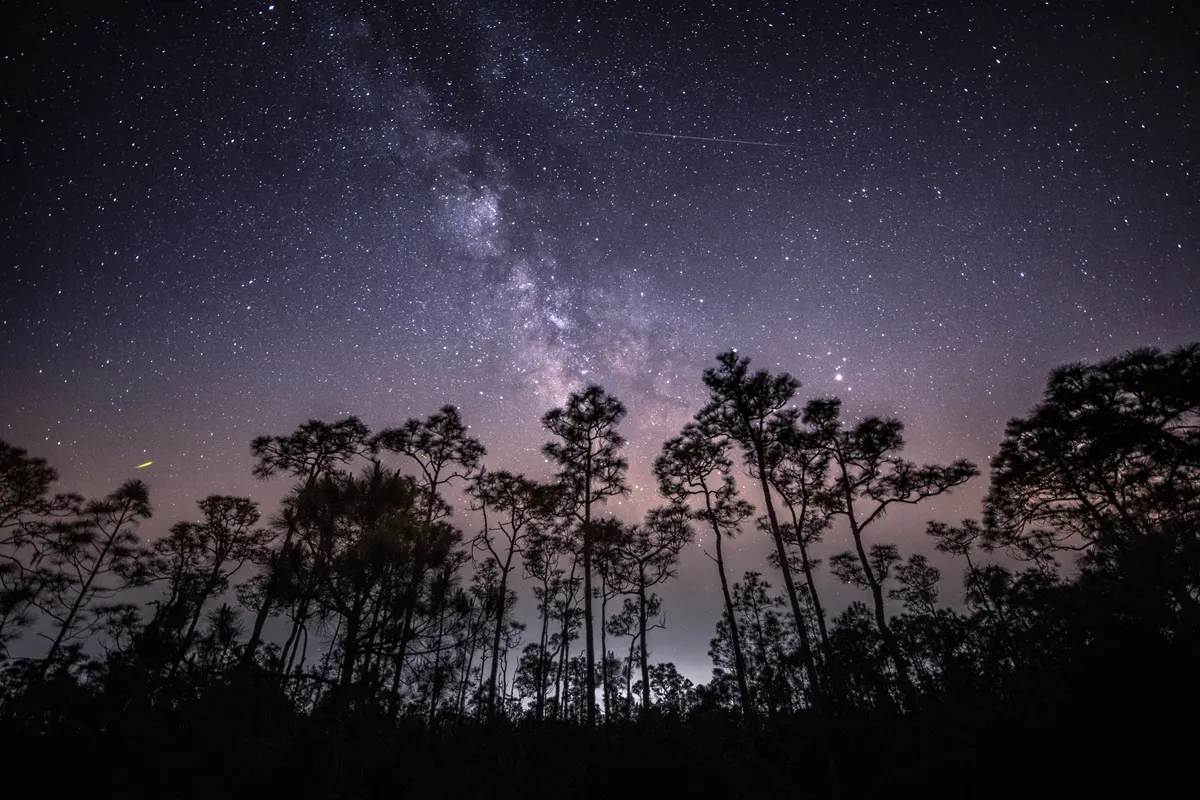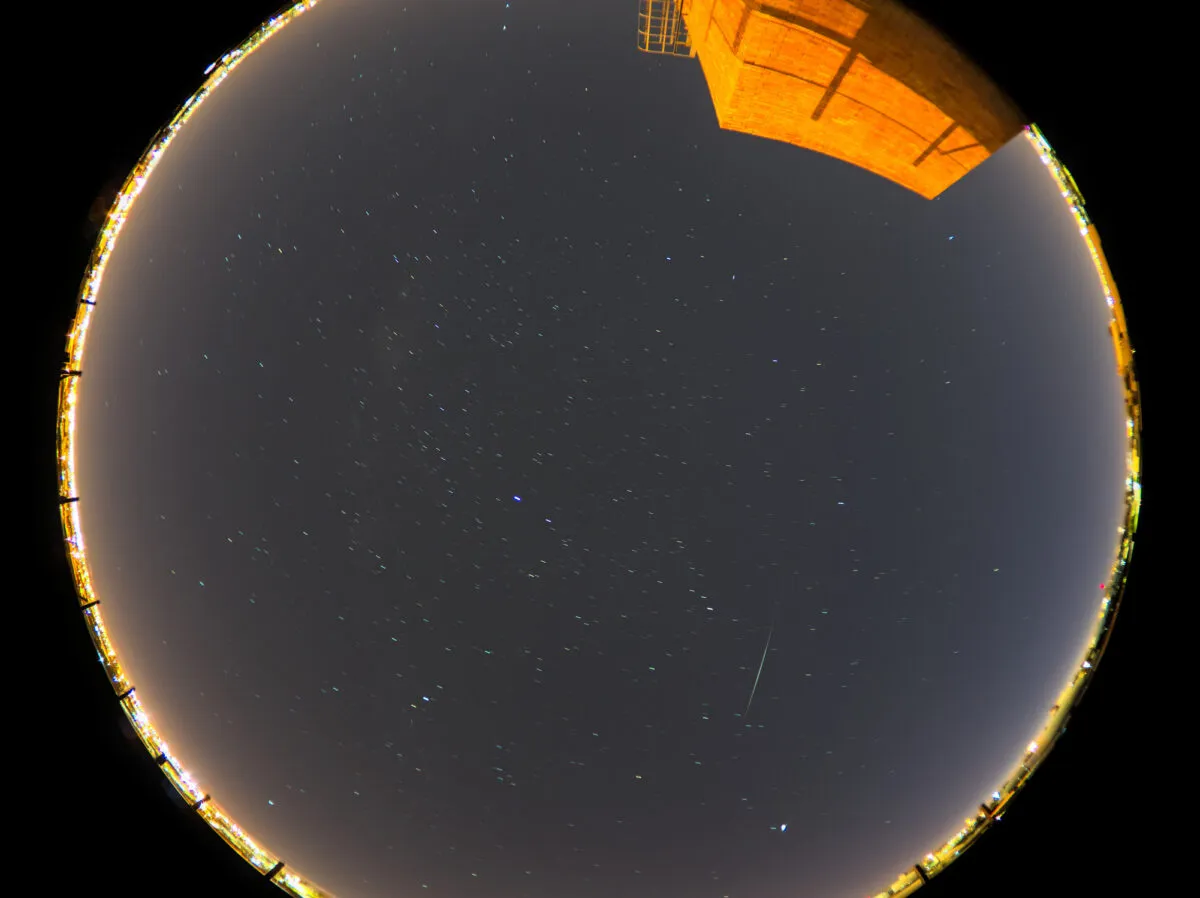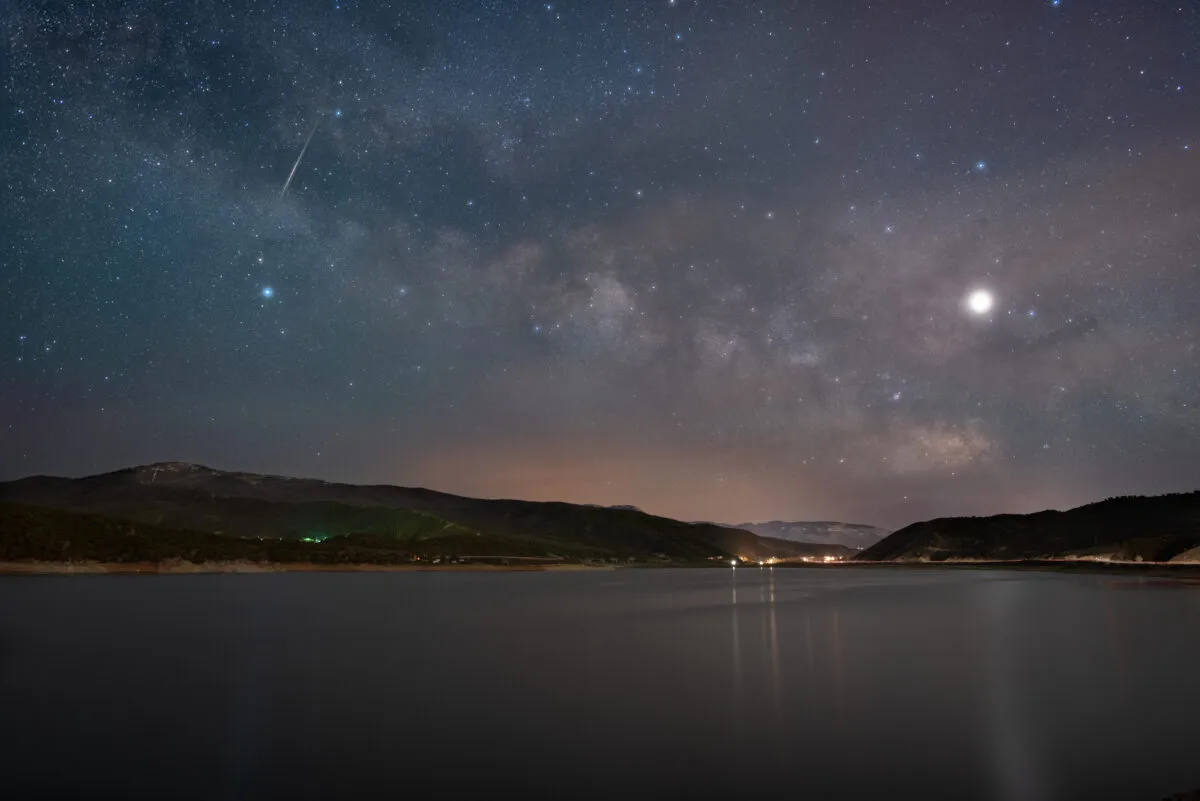The Eta Aquariid meteor shower 2024 reaches peak activity on 5/6 May, with best rates seen from the UK in the run-up to dawn on 6 May.
The Eta Aquariid meteor shower is visible from about 19 April to 28 May each year, with peak activity marking the period during which you're most likely to see one (weather depending).
It’s one of two meteor showers associated with comet Halley, the other being the Orionids that peak in the second half of October.

How many meteors will you see?
The Eta Aquariid shower has a moderate peak zenithal hourly rate (ZHR) of 40 meteors per hour – but there’s the rub.
The ZHR of a meteor shower indicates how many meteors you can expect to see under perfect conditions with the shower radiant – the point in the sky from which the meteors appear to emanate – directly overhead at your zenith.
Perfect conditions are rarely possible and it’s unusual to have a shower radiant at the zenith.
Things are particularly inauspicious with the Eta Aquariids because the radiant barely rises before dawn kicks in.
This gives you a very short observing window and the visual hourly rate – that’s the number of meteors you’re likely to see – will be very low.

Good news: the Moon is out of the way
The peak of the 2024 Eta Aquariid meteor shower occurs when the Moon is out of the way, leading to very favourable conditions if clear.
This is in contrast to the recent Lyrid meteor shower, which in 2024 suffered as a result of a bright full Moon during peak activity.
And while a low radiant isn’t ideal for numbers, it can also lead to an interesting effect where a meteor trail appears long, due to meteoroids hitting the atmosphere above you at a shallow angle.
These are known as Earth-grazers. If you’re lucky enough to see one of these, they can be pretty spectacular.

You can get Earth-grazers before a shower’s radiant has risen.
If it’s clear on 6 May, we’d recommend a watch for Eta Aquariid meteors from 02:00 BST (01:00 UT) until the onset of dawn.
Meteors can also be seen in twilight conditions, but the chances of seeing them decline as the sky brightens.

Eta Aquariid meteor shower explained
The Eta Aquariid meteor shower is one of many annual meteor showers that occur at the same time every year.
Meteor showers are caused by Earth passing through streams of debris left behind by comets - and occasionally an asteroid, like for example asteroid 3200 Phaethon, which causes the Geminid meteor shower.
As Earth passes through the cosmic debris, particles enter the atmosphere at high speeds and they burn up, causing a bright streak to be seen in the sky.
For more on this, read our guide What causes a meteor shower?
The Eta Aquariid meteor shower is one of two annual showers caused by Halley’s Comet, the second being the Orionid meteor shower which peaks in the third week of October in Orion.
Meteoroids from Halley’s Comet enter Earth’s atmosphere at a speed of 66km/s, putting them towards the upper part of the meteor speed spectrum.

How to see the Eta Aquariid meteor shower
The Eta Aquariid shower is best suited for the Southern Hemisphere sky, but it is certainly possible to see in the UK.
The radiant (the point at which the shower appears to a terrestrial observer) is located near to the Water Jar asterism in the constellation of Aquarius, the Water Bearer.
Top tips for seeing an Eta Aquariid meteor
- Wrap up warm: it may be springtime, but meteor-observing involves lots of sitting still
- Find a dark spot away from light pollution
- Use a reclining chair or sun lounger to prevent neck-ache from looking upwards for extended periods
- Let your eyes get well and truly adjusted to the darkness for maximum sensitivity
- Locate the radiant
- Lean back and keep watching. If you see a bright steak emanating from the radiant, you've seen an Eta Aquariid
It is also advisable to observe with friends and family. This is much safer than standing in a remote location at night on your own, but also means you and the rest of your group can keep a record of how many meteors you spot.
Take turns to have one person note down the times that meteors are spotted, giving everyone else the chance to focus on observing.
If you do produce a record of how many Eta Aquariid meteors you saw, can could even submit your data to the British Astronomical Association Meteor Section.
Pete Lawrence is an expert astronomer, seasoned meteor observer and a co-host of The Sky at Night.
